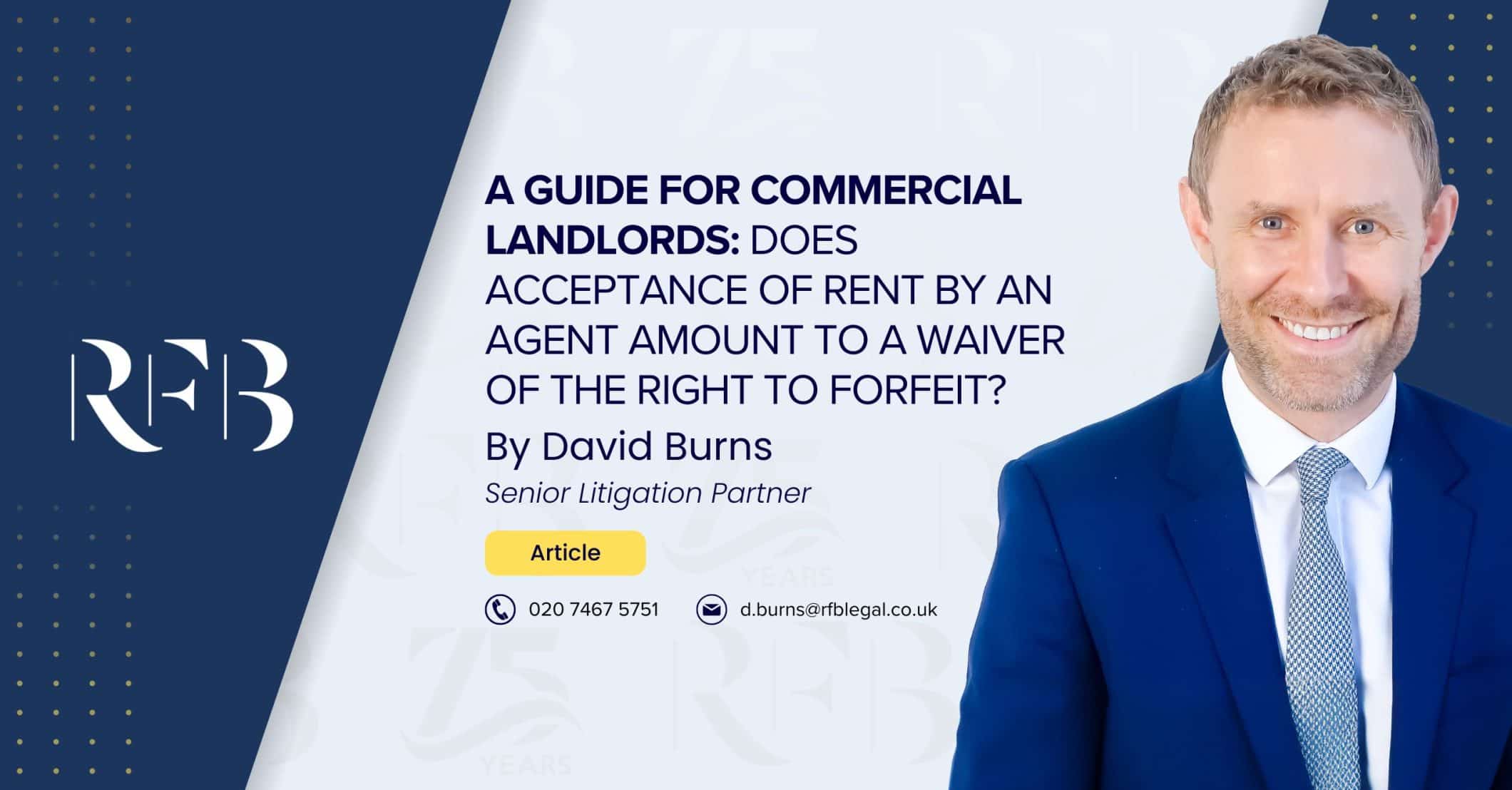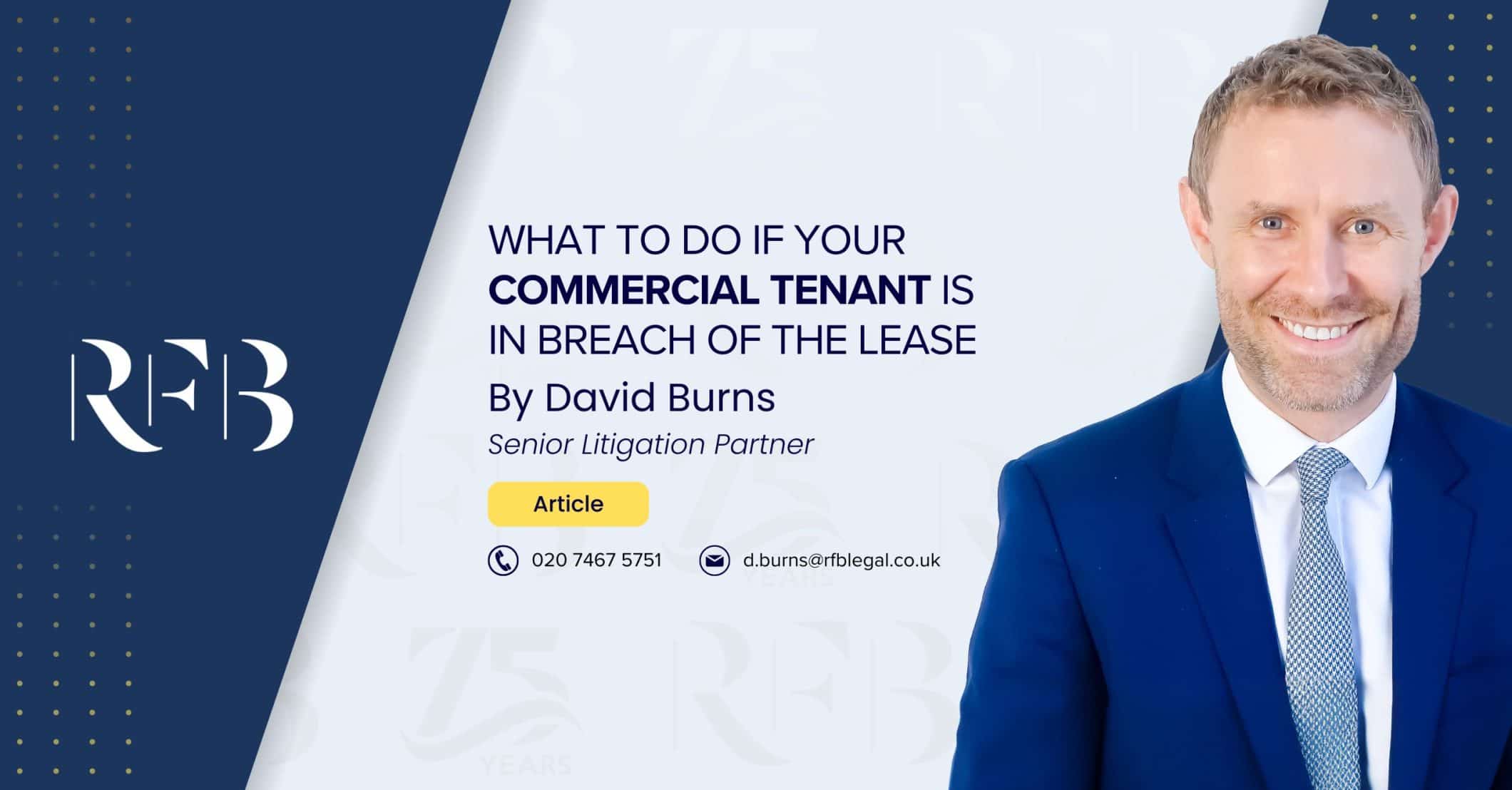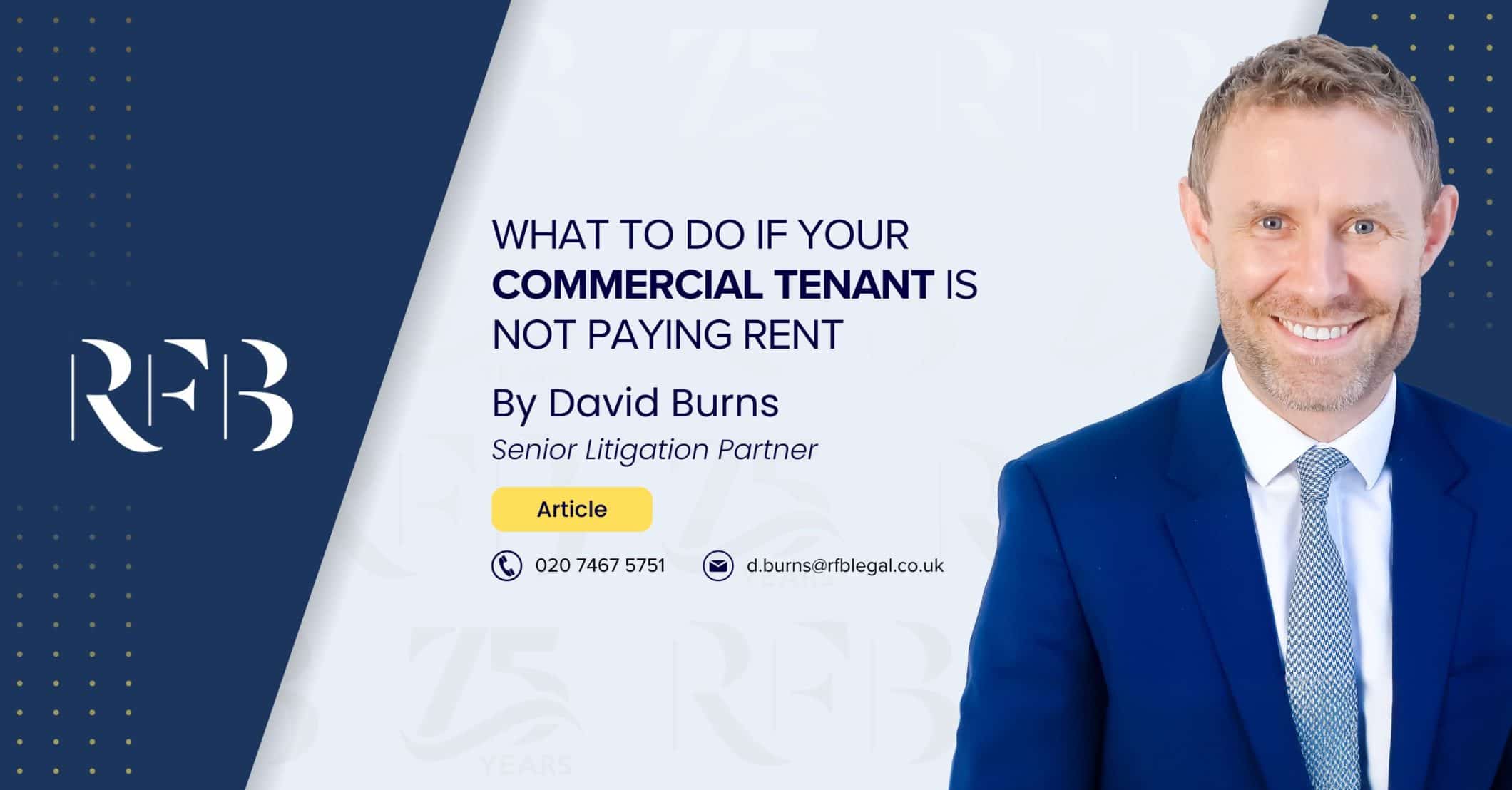A notice served under Section 146 of the Law of Property Act 1925 is a crucial legal instrument for landlords. It is a formal notice issued to a tenant, notifying them of a breach of the lease and requesting them to remedy the breach within a specified period.
In many cases, a landlord’s right to re-enter a property due to a breach of covenant is not enforceable by peaceable re-entry or legal proceedings unless and until a valid Section 146 Notice has been served on the tenant.
Section 146 of the Law of Property Act 1925 sets out the restrictions on a commercial landlord’s right to re-enter for breach of a covenant. This article explores some of the key requirements that commercial landlords must meet before pursuing the forfeiture of a lease.
Re-entry
A landlord can forfeit a commercial lease either by peaceable re-entry to the property or by issuing forfeiture proceedings against the tenant. Forfeiture represents a final and positive act that the landlord cannot retract, by which the landlord demonstrates its intention to forfeit the lease.
Forfeiture or re-entry is the landlord’s right to determine the lease in the following circumstances:
- Where the tenant has breached any of their obligations under the lease.
- On the occurrence of specific events outlined in the lease, such as the tenant’s insolvency.
Forfeiture by peaceable re-entry will terminate the lease, subject to any claim for relief by the tenant or any third party with an interest in the tenancy.
For a landlord to have a right to re-enter the property for a breach of covenant by the tenant, the right to re-enter and forfeit the lease must be expressly reserved in the lease. If there is a breach of a condition of the lease, the landlord may still have the right to re-enter the property.
It is essential for commercial landlords to be aware that the forfeiture of a commercial lease is subject to several procedural restrictions, including those imposed by Section 146 of the Law of Property Act 1925. Once a right to re-enter has arisen, the landlord must comply with statutory and common law rules governing the exercise of that right.
When Is a Section 146 Notice Necessary?
In many cases, a landlord’s right of forfeiture for breach of covenant is not enforceable by peaceable re-entry or legal proceedings unless and until a valid Section 146 notice has first been served on the tenant.
For example, serving a valid Section 146 Notice is a condition precedent to forfeiture for breach of a tenant’s repairing obligation. However, a Section 146 Notice is not required where the landlord seeks to forfeit the lease due to non-payment of rent.
It is important that a landlord of a commercial lease understands the circumstances when the service of a valid Section 146 Notice is a condition precedent to forfeiture and in the event that it is, the landlord must ensure the Section 146 notice is valid and properly served.
Specifying the Breach
Section 146 of the Law of Property Act 1925 requires that the notice must:
- Clearly identify the breach of covenant.
- Specify the exact lease term that has been violated.
If the notice is vague or ambiguous, it may be deemed invalid and unenforceable.
The importance of ensuring that a section 146 notice complies with the statutory requirements was highlighted in Akici v LR Butlin Ltd [2005] EWCA Civ 1296. In Akici, the Court of Appeal held that the section 146 notice served by the landlord was not valid, because it failed to specify the breach that the tenant had committed. The tenant in that case had a ‘lucky escape’ due to the failure of the landlord to comply with the technical requirements of section 146 of the Law of Property Act 1925.
It is important for commercial landlords to be careful in drafting the notice to ensure that it clearly specifies the breaches of the lease.
Giving the Tenant a Reasonable Opportunity to Remedy the Breach
The purpose of a Section 146 Notice is to allow the tenant an opportunity to remedy the breach and apply for relief from forfeiture.
The landlord must provide the tenant with a reasonable amount of time to rectify the breach. If the landlord fails to allow sufficient time, the notice may be deemed invalid. For example, landlords often make the mistake of setting an unreasonably short timeframe for remediation, which can lead to an unlawful forfeiture of the lease.
It is therefore important to ensure that the timeframe given to the tenant to remedy the breach is realistic and reasonable. What constitutes a reasonable timeframe will depend on the unique set of circumstances of each case.
Serving the Notice on All Relevant Parties
Landlords may also fall into the trap of serving the Section 146 notice on only one tenant or one party listed on the lease, overlooking other responsible individuals or entities, such as guarantors or joint tenants. In cases where the lease has multiple tenants or other individuals who are co-signatories, the notice ought to be served on all parties as otherwise it may be rendered ineffective.
Accordingly, landlords ought to ensure that the notice is served to all relevant parties involved in the lease agreement, including co-tenants, guarantors, and even mortgagees (if applicable).
In addition, ensuring effective and valid service of a Section 146 notice is very important and a landlord ought to check the service provisions in the lease carefully. If the notice is not served in the correct manner, it may not be legally valid. Common mistakes include serving the section 146 notice by an incorrect method such as via email, instead of post or personal delivery or serving the notice to the wrong address.
Using Section 146 in the Wrong Context
Landlords should avoid serving a Section 146 Notice when it is not warranted. Section 146 applies specifically to breaches of a covenant or condition in a lease—it does not cover all disputes between landlords and tenants.
For example, a Section 146 Notice should not be used for:
- Personal grievances with a tenant’s behaviour.
- Complaints about property damage that do not constitute a breach of lease terms.
If there is any doubt as to whether a Section 146 Notice is appropriate, landlords should seek legal advice.
Inappropriate Use of Forfeiture
Once a Section 146 notice has been served, in the event that the breach referred to in the notice has not been remedied, landlords may decide to proceed with forfeiture of the lease.
Landlords should be aware of the risk of forfeiture proceedings being deemed unlawful if they have not fully complied with the procedural requirements, such as the failure to serve a valid Section 146 notice or provide adequate time to remedy the breach.
Landlords ought to consider whether there are any circumstances which could prevent them from lawfully terminating the lease (such as waiver of the right to forfeit by the landlord). We refer you to our article “What to Do if Your Commercial Tenant Is in Breach of the Lease” which discusses this issue further.
In some cases, tenants may be able to apply for damages for unlawful forfeiture or relief from forfeiture particularly in situations where the breach is remedied and the tenant has paid any costs or expenses arising from the forfeiture.
Conclusion
A Section 146 Notice is a powerful tool for landlords dealing with lease breaches, but it must be carefully drafted to ensure compliance with both the lease terms and the statutory requirements under Section 146 of the Law of Property Act 1925.
To avoid potential pitfalls, landlords should:
- Understand the legal requirements.
- Give tenants a reasonable opportunity to remedy breaches.
- Adhere strictly to procedural obligations.
Section 146 Notice Solicitors – Contact Us
Should you have any queries about this topic, please contact Partner David Burns by email d.burns@rfblegal.co.uk or by phone on 0207 467 5751.





